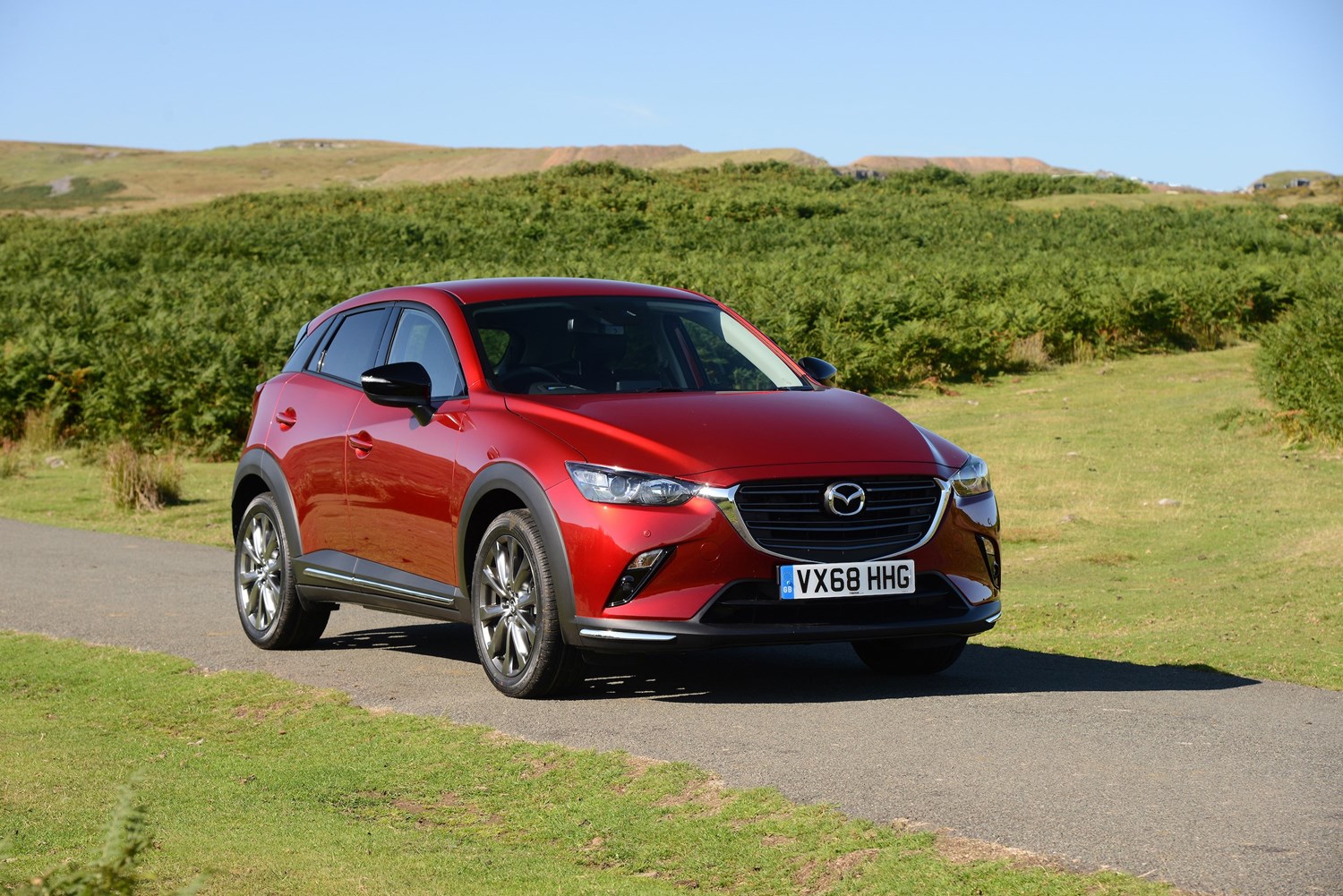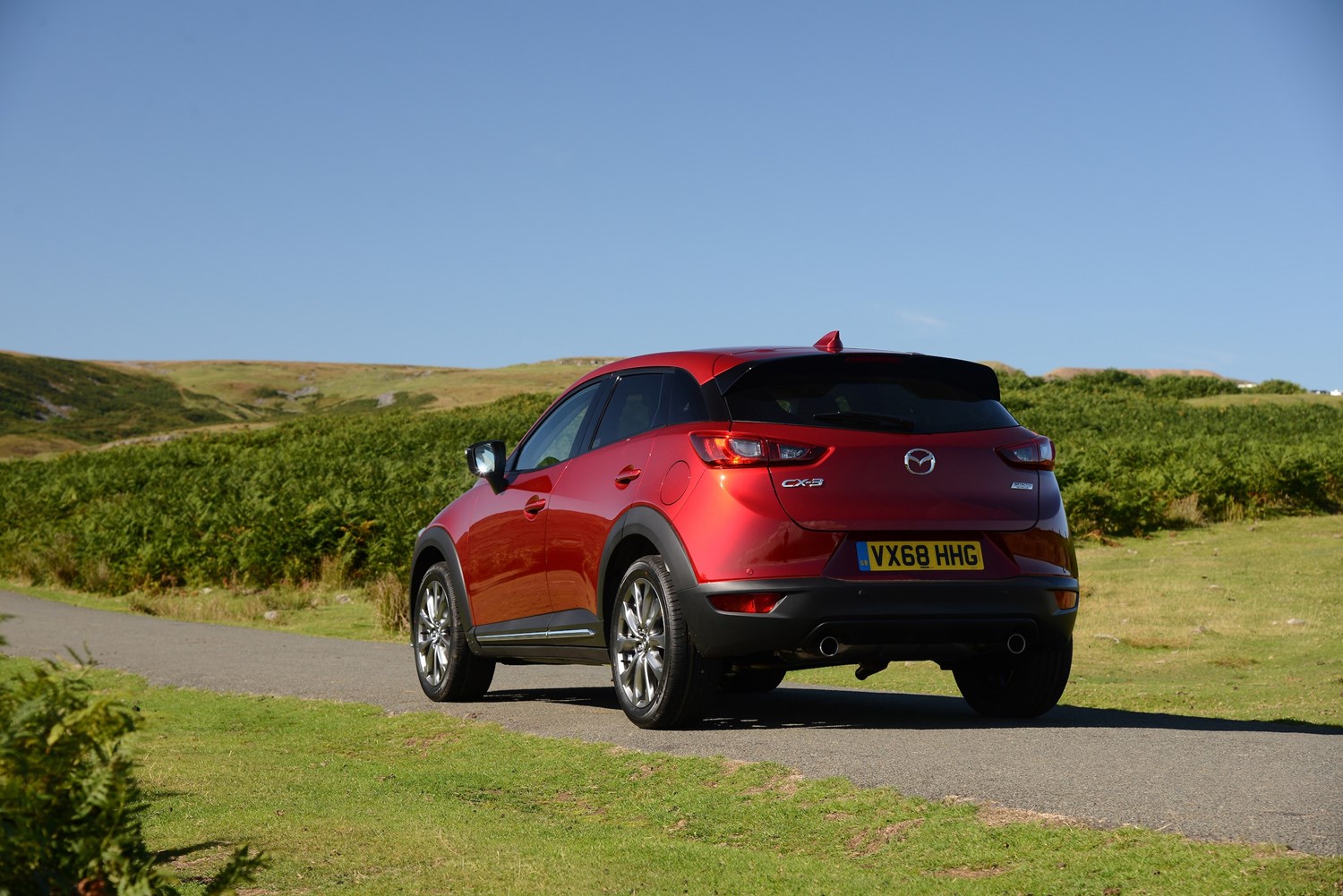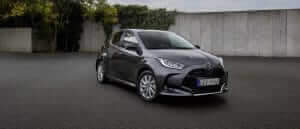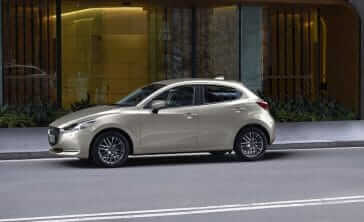Model review
Mazda is a firm that has had plenty of success with its SUVs over the years, not least its CX-5, which arrived in 2012 and was one of the first models in its class that proved an SUV could be good to drive as well as spacious.
It was an immediate success, and it didn’t take Mazda long to extend its line-up, with the CX-3 arriving as the brand’s first compact crossover in 2015 – rivalling the likes of the Nissan Juke and Renault Captur.
The CX-3 brought cool sporty styling to the Mazda range, and came with the full suite of the brand’s ‘skyactiv’ petrol engines. It also features impressive levels of safety technology and connectivity, too, including autonomous emergency braking and lane keep assist, which made it one of the first cars in this segment to feature such things.
Latest model
Despite constant model year updates, Mazda gave the CX-3 more of a comprehensive refresh in 2018. Key changes included the addition of a new 1.8-litre diesel model, along with light styling changes – such as a revised grille and different trim.
It was arguably inside where you’d notice the biggest differences, though, with the updated CX-3 gaining an electric parking brake, while the ergonomics improved thanks to a revised layout. The seats also provide greater comfort, while thicker sound insulation improves refinement, too. Mazda would introduce a limited-run GT Sport Nav+ model in 2019 – bringing red Nappa leather seats, standard metallic paint and new silver-coloured accents.
However, with Mazda introducing a new CX-30 crossover at the start of 2020, this would all but replace the smaller CX-3, which was quietly removed from sale in 2019 – just a year after it was updated.
Value for money
The CX-3 was always pitched as one of the pricier cars in the compact SUV segment, with models available from £18,995 when the last update launched in 2018. That’s a few thousand more than what you’d pay for a Nissan Juke or Peugeot 2008 at the time, too.
That said, it holds its value pretty well, and even a high-spec early 2015 car with around 40,000 miles on the clock would still set you back around £10,000. Meanwhile if you fancy a later revised 2018 car, at the time of writing you could still expect to need to stump up £14,000 for one of these.
Standard kit is generous however, with all 2018 models coming with cruise control, a media system with Apple CarPlay, air conditioning and alloy wheels.
Looks and image
Up until the CX-3 arrived, it’s safe to say the crossover class was lacking a sporty-looking model in this segment. But with the arrival of this Mazda, it helped to inject extra flair into this market, with its bold styling, large alloy wheels and sleek almost coupe-like design going a long way. Whether you choose a pre- or post-facelift model, you’ll be treated to a very stylish crossover.
The CX-3’s cabin was one of the best around when it debuted, and it remains a very nice place to be, even by modern class standards. Soft-touch plastics are used across the cabin, while the seven-inch media system is very simple to use, and includes all the key features that it needs to – smartphone mirroring and satellite navigation, for example.
Another strength of the CX-3 is the way it drives, as it’s one of the best compact crossovers behind the wheel – feeling agile, grippy and light. In fact, because it’s quite low for a car of this type, it behaves in a similar fashion to a normal hatchback. That said, its sportier stance isn’t compromised by a firm ride - quite the opposite in fact.
Space and practicality
Mazda prides itself on the way its cars look and the way they drive, and that often means there’s a weakness somewhere. And, like on many of the firm’s cars, the CX-3’s only disappointment is its practicality.
Granted, it’s still relatively roomy, and a 350-litre boot isn’t bad for a car of this size, though it reduces quite significantly to just 287 litres if you select a car with the upgraded Bose sound system. Rear space is also quite tight for adults, not least due to the CX-3’s sloping roofline that gives it a sportier look. A Renault Captur or Skoda Kamiq are better options in this class when it comes to spaciousness.
Engines
The engine range on the CX-3 is pretty extensive, with the model available with a good variety of petrol and diesel engines and transmission options.
Kicking off the range are a pair of 2.0-litre petrol engines, which produce either 119bhp or 148bhp. Both do without turbochargers and are available with manual or automatic gearbox options. The more powerful 148bhp engine is also offered with all-wheel-drive.
The 148bhp 2.0-litre petrol is also the most powerful CX-3 on offer – reaching 0-60mph in 8.6 seconds and heading on to a top speed of 124mph.
If you’d prefer a diesel, there is a 103bhp 1.5-lite unit available with a choice of transmissions and front- or all-wheel-drive. This was sold until 2018 when it was replaced by a new 113bhp 1.8-litre diesel. It’s an engine that’s pretty rare due to the CX-3’s axe not long after.
Running costs
If you’re looking to keep your running costs down, you’ll want to take a look at the diesel CX-3s. The most efficient on paper is the 1.5-litre model, which Mazda claims will return 70.6mpg, with CO2 emissions of 105g/km. Because it was sold before stricter efficiency testing was brought in, though, it won’t be quite so cheap to run as it might look on paper. If you’re looking at the later 1.8-litre model, which was tested on the current WLTP testing cycle, it will return 54.3mpg, with CO2 emissions of 138g/km.
Petrol models can be quite thirsty, though, not least if they have an automatic gearbox and all-wheel-drive – something that could see the CX-3 returning just 35mpg, with CO2 emissions of 166g/km, which could make it quite costly to run.
Things to look out for
Mazda has a pretty good reputation for reliability, and there should be no major cause for concern with the CX-3. There are a few things you should look out for, though. Check the air conditioning is working as it should as some owners have reported that it doesn’t get cold as a result of an issue with the condenser. Diesel models with a DPF filter also need to be doing sufficient mileage and long journeys as otherwise this can cause trouble, too.
Rivals
The compact crossover segment continues to remain as popular as ever and the CX-3 has no shortage of rivals. If you fancy a sportier crossover, take a look at the Seat Arona, Toyota C-HR and Ford Puma, while more conventional options include the Renault Captur, Peugeot 2008 and Nissan Juke. A Skoda Kamiq is also a solid all-rounder, too, though will command higher used prices as it wasn’t introduced until 2019.
Depreciation
With no CX-3s available to buy new, your only option will be on the new market. Values have remained pretty firm in comparison to rivals – the Mazda’s design and driving fun making it more attractive than other cars in this class.





